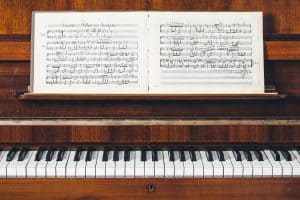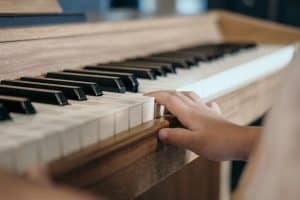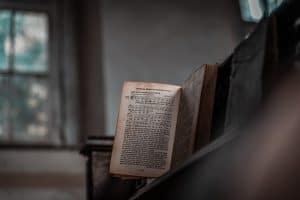What is articulation in music?
Piano articulation refers to the marks that change how we play and perform music. In a written score, articulation markings in music don’t change the pitches, frequency or rhythm of the notes that are played; they dictate how they are performed. Articulation can dictate the duration and attack of notes, alter phrasing and how we connect pitches together.

Here is an example of an incredible piece of staccato music by Ravel, his Tocatta. The pianist plays the entirety of the piece using the staccato (short) articulation.
As you can see, music articulation is a very important concept for you to learn and master to play piano and understand piano theory. We can find examples of these in the music you would find during Skoove’s online piano lessons.
Articulation notation
With articulation in music we can easily split different types of articulation in music into categories based on how each articulation accents notes, changes dynamics of our playing, or the piano technique we use.
Slur
A slur is a type of piano articulation that alters multiple notes. A musician will play a slur so that pairs of or multiple notes are connected. You can easily create this sound on your piano by depressing your foot pedal. This can also be achieved by smoothly transitioning from note to note with good legato finger technique.
Legato
Legato changes how you approach all notes in a phrase, or a group of piano notes. When a legato direction is given notes must be smooth and connected. Much like a slur but less strict! On some instruments this will mean that you play with a different type of bowing technique, or that a musician will smooth out all of the individual plucks of the instrument. On piano, you can try to create this sense of smoothness between every note with good finger technique.
Staccato
A staccato mark is a small dot on top of a note head. Staccato notes are performed short and separated, half the length of their original value. Staccato comes from the Italian ‘to detach’, so the single note becomes detached from the group. Not to be confused with dotted notes. 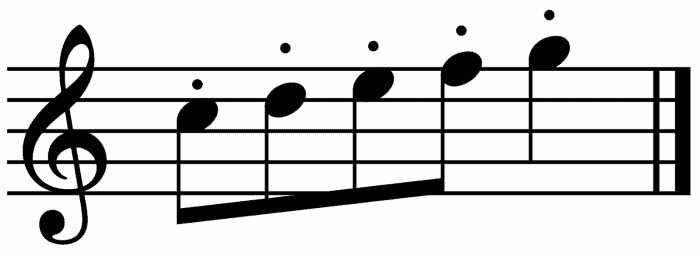
Staccatissimo
Staccatissimo is also an Italian term and is an extreme version of the staccato dot. Musicians will play this like a staccato but even more separated. These are the most detached phrases you can possibly make. Both staccatissimo and staccato change the duration of the note played, but they do not change the placement of the notes within a rhythm. 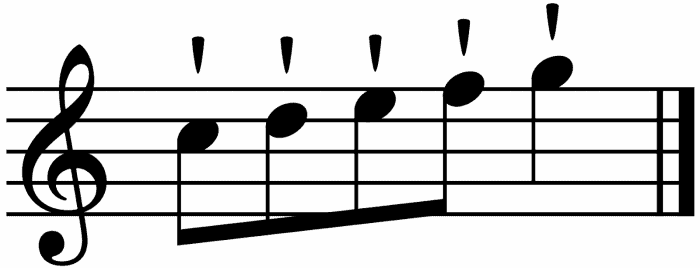
Portato
Portato is an articulation that applies to a group of notes shown by both a staccato dot and a slur or tenuto on grand staff notes. It combines the characteristics of two articulation types legato and staccato, slightly separating the notes.
Accents
Accents are an articulation that applies only to one note, they change the volume at which something is played, making the note louder. They can combine with legato as staccato does, however when employed, they change how the musician attacks a note within a legato or slurred phrase.

Sforzando
The sforzando symbol is easy to recognize because it is a combination of an ‘s’, an ‘f’, and a ‘z’, found in the word. It means that the music will be played very loudly and then reduced down to an extreme quiet, a sudden attack in a phrase, chord or note. 
Marcato
Marcato comes from the word in Italian meaning ‘marked’, indicating that notes marked marcato are intended to be played slightly louder than the next note but not sustained at that volume for the entire rhythm. When reading piano notes with marcato markings, the articulation is slightly detached with a harsher attack and increased volume, different from a simple accent.
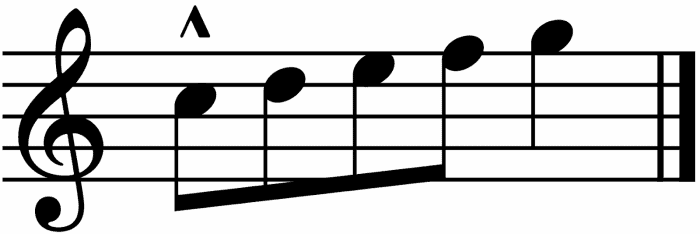
Tenuto
Tenuto notes are meant to be played for the entire duration of the rhythm. Often musicians will leave one note to the next note a little early, in order to make a phrase more interesting. This is commonplace and assumed by all composers so, when a composer really wants their performer to perform a note to its fullest value, a tenuto is written. It also implies a slight emphasis on the notes performance.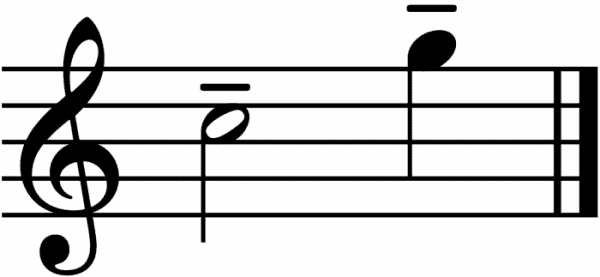
Fortepiano
A fortepiano is exactly what it sounds like. This dynamic articulation notates a sudden burst of playing very loudly then immediately back to playing piano (quietly).
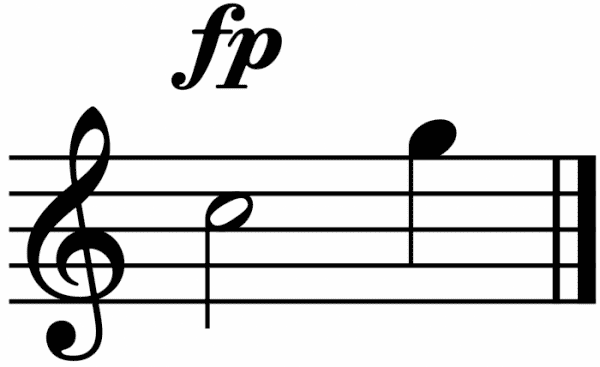
Fermatas
A fermata or ‘pause’ is unique as an articulation as it controls timing. When playing in an ensemble with a conductor, the fermata indicates the performers to hold and wait for a signal from the director or hold for as long as the performer would like in solo music. This allows composers to increase the length of a note without making it very difficult to read with odd rhythms or time signature changes.
If you need help remembering any of these types of articulation in your practice be sure to make use of this handy chart!
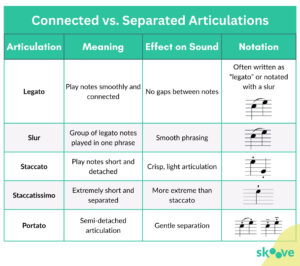
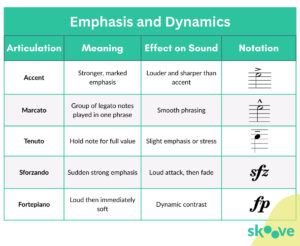

Articulation technique on the piano
As you can imagine a lot of these articulations can be interpreted in many different ways and are very situational. Many pieces will use combinations of all types of musical instructions and articulation.
General rules to follow:
- Ties or phrase markings will include some use of the piano pedal or holding down for a longer time than you would normally.
- Accent marks will involve you pressing notes very shortly and physically removing your fingers from them where you might prefer to leave them in one place.
- Dynamic markings in music and a dynamic articulation will involve varied force and control over the instrument.
How to play articulations on piano?
The best way to add spice and interest to your piano practice is by incorporating different types of articulation. If you’re playing scales or practicing key signatures why not practice doing them all staccato, tenuto or any articulation combination you can imagine?
This will allow you to internalise these articulation marks and incorporate them into your playing with ease. If you need any more help and guidance Skoove is always just a tap away. With helpful lessons on articulation just like this one.
Now you are familiar with the most common types of articulation you have opened up a whole new world of piano playing fun. Happy practicing!
Author of this blog post:









